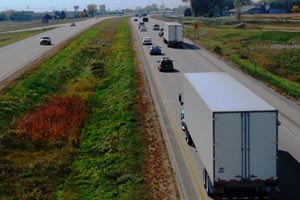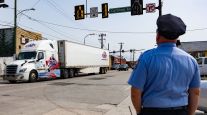Wisconsin Seeks to Convert U.S. 41 to an Interstate

The Wisconsin Department of Transportation will proceed with its application to convert 175 miles of U.S. 41 into a part of the interstate highway system.
The state received the necessary waiver as part of the recent federal spending agreement signed into law by President Obama.
An engineer for the state’s DOT said the department expects final approval from the Federal Highway Administration during the spring, and then Interstate 41 shields probably will start to be posted between Milwaukee and Green Bay in the summer.
The promotion to interstate status can be a useful tool in economic development, said WDOT’s Tammy Rabe, a project development supervisor.
“Some businesses will only locate along an interstate highway,” said Rabe, adding that the road conversion means 41 would change “from a regionally known highway to one with national recognition.”
The Wisconsin Motor Carriers Association welcomed the development.
“This is absolutely good news for us. U.S. 41 is a primary corridor between Green Bay and Chicago,” WMCA President Neal Kedzie said.
I-43 already runs between Milwaukee and Green Bay, but it hugs the western shore of Lake Michigan. U.S. 41 is an inland route that also services Appleton, Neenah and Oshkosh, Wisconsin. Kedzie described it as a very industrial part of the state.
A part of the federal Consolidated and Further Continuing Appropriations Act, or “Cromnibus,” said trucks with total weight in excess of 80,000 pounds may keep running the road after the conversion if they keep with the same practice as before the change.
Rabe said U.S. 41 is a popular road choice for heavy-haul transporters of agricultural commodities, timber and scrap metal. She estimated that 10% to 15% of the trucks using the road are heavy-haul vehicles with special permits.
The state wants to keep heavy trucks on U.S./Interstate 41 and does not want the vehicles diverted to smaller local roads, Rabe said. Without the waiver, Wisconsin would not be willing to seek the conversion, she said.
WDOT has been improving the road over the past 10 years, meaning the conversion will not require major construction at this point, Rabe said.
“It already meets interstate standards,” she said.
Kedzie said the waiver means heavy-haul carriers will not have to break up their loads to less than 80,000 pounds.
“It will help them stay competitive,” he said.
The waiver language was inserted in Cromnibus by the state’s two U.S. senators, Democrat Tammy Baldwin and Republican Ron Johnson, and by two Republican House members, Reid Ribble and the just-retired Thomas Petri.




